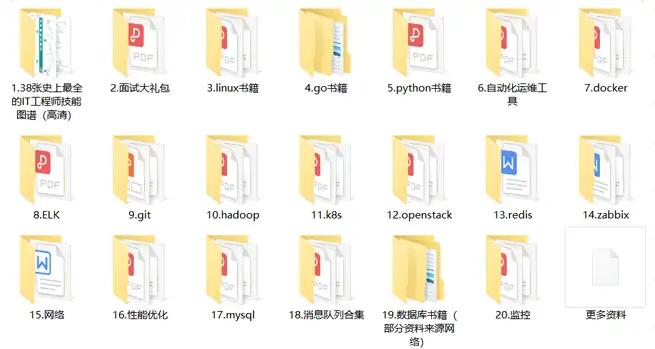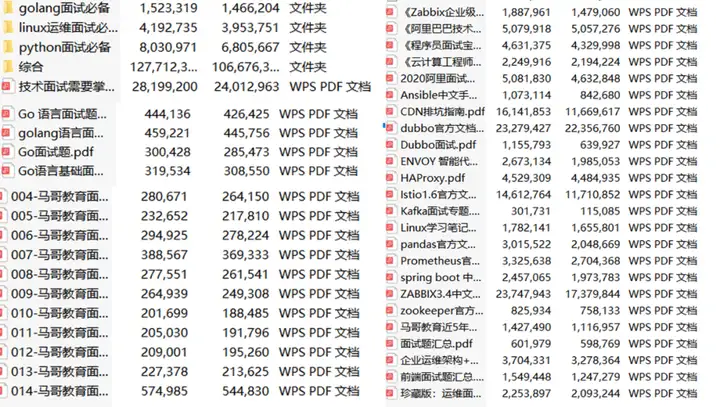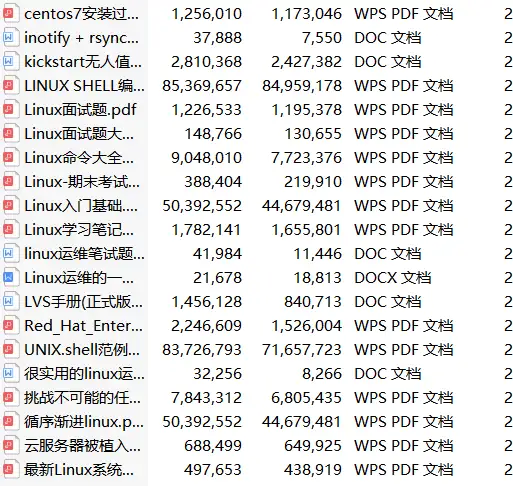е‘ҠеҲ«еҠ зҸӯпјҒPythonи„ҡжң¬е®һзҺ°иҝҗз»ҙе·ҘдҪңиҮӘеҠЁеҢ–зҡ„5дёӘе®һз”ЁжЎҲдҫӢ
еүҚиЁҖпјҡиҝҳеңЁдёәйҮҚеӨҚжҖ§иҝҗз»ҙе·ҘдҪңиҖҢзғҰжҒјпјҹжҜҸеӨ©иў«еҗ„з§Қе‘ҠиӯҰгҖҒзӣ‘жҺ§гҖҒйғЁзҪІжҗһеҫ—з„ҰеӨҙзғӮйўқпјҹдҪңдёәдёҖеҗҚжңү10е№ҙз»ҸйӘҢзҡ„иҝҗз»ҙиҖҒеҸёжңәпјҢд»ҠеӨ©еҲҶдә«5дёӘи¶…е®һз”Ёзҡ„PythonиҮӘеҠЁеҢ–и„ҡжң¬пјҢи®©дҪ зҡ„иҝҗз»ҙе·ҘдҪңж•ҲзҺҮжҸҗеҚҮ300%пјҒиҝҷдәӣйғҪжҳҜжҲ‘еңЁз”ҹдә§зҺҜеўғдёӯе®һйҷ…дҪҝз”Ёзҡ„жЎҲдҫӢпјҢд»Јз Ғз®ҖжҙҒй«ҳж•ҲпјҢжӢҝжқҘеҚіз”ЁпјҒ
рҹҺҜ жЎҲдҫӢ1пјҡжү№йҮҸжңҚеҠЎеҷЁеҒҘеә·жЈҖжҹҘи„ҡжң¬
з—ӣзӮ№пјҡжҜҸеӨ©ж—©дёҠйңҖиҰҒжЈҖжҹҘеҮ еҚҒеҸ°жңҚеҠЎеҷЁзҡ„CPUгҖҒеҶ…еӯҳгҖҒзЈҒзӣҳдҪҝз”Ёжғ…еҶөпјҢжүӢеҠЁзҷ»еҪ•еӨӘиҙ№ж—¶гҖӮ
и§ЈеҶіж–№жЎҲпјҡдёҖй”®жү№йҮҸжЈҖжҹҘпјҢејӮеёёиҮӘеҠЁе‘ҠиӯҰпјҒ
#!/usr/bin/env python3
import psutil
import smtplib
from email.mime.text import MIMEText
import json
from datetime import datetime
class ServerHealthChecker:
def __init__(self, thresholds=None):
self.thresholds = thresholds or {
'cpu_percent': 80,
'memory_percent': 85,
'disk_percent': 90
}
self.alerts = []
def check_system_health(self):
"""жЈҖжҹҘзі»з»ҹеҒҘеә·зҠ¶еҶө"""
health_data = {
'timestamp': datetime.now().strftime('%Y-%m-%d %H:%M:%S'),
'hostname': psutil.boot_time(),
'cpu_percent': psutil.cpu_percent(interval=1),
'memory': psutil.virtual_memory(),
'disk': psutil.disk_usage('/'),
'processes': len(psutil.pids())
}
# CPUжЈҖжҹҘ
if health_data['cpu_percent'] > self.thresholds['cpu_percent']:
self.alerts.append(f"вҡ пёҸ CPUдҪҝз”ЁзҺҮиҝҮй«ҳ: {health_data['cpu_percent']:.1f}%")
# еҶ…еӯҳжЈҖжҹҘ
memory_percent = health_data['memory'].percent
if memory_percent > self.thresholds['memory_percent']:
self.alerts.append(f"вҡ пёҸ еҶ…еӯҳдҪҝз”ЁзҺҮиҝҮй«ҳ: {memory_percent:.1f}%")
# зЈҒзӣҳжЈҖжҹҘ
disk_percent = (health_data['disk'].used / health_data['disk'].total) * 100
if disk_percent > self.thresholds['disk_percent']:
self.alerts.append(f"вҡ пёҸ зЈҒзӣҳдҪҝз”ЁзҺҮиҝҮй«ҳ: {disk_percent:.1f}%")
return health_data, self.alerts
def send_alert_email(self, alerts, to_email):
"""еҸ‘йҖҒе‘ҠиӯҰйӮ®д»¶"""
if not alerts:
return
msg = MIMEText('\n'.join(alerts), 'plain', 'utf-8')
msg['Subject'] = f'рҹҡЁ жңҚеҠЎеҷЁеҒҘеә·жЈҖжҹҘе‘ҠиӯҰ - {datetime.now().strftime("%Y-%m-%d %H:%M")}'
msg['From'] = 'monitor@company.com'
msg['To'] = to_email
# иҝҷйҮҢйңҖиҰҒй…ҚзҪ®SMTPжңҚеҠЎеҷЁ
print(f"е‘ҠиӯҰйӮ®д»¶еҶ…е®№:\n{chr(10).join(alerts)}")
# дҪҝз”ЁзӨәдҫӢ
if __name__ == "__main__":
checker = ServerHealthChecker()
health_data, alerts = checker.check_system_health()
print(f"вң… зі»з»ҹеҒҘеә·жЈҖжҹҘе®ҢжҲҗ - {health_data['timestamp']}")
print(f"рҹ–ҘпёҸ CPU: {health_data['cpu_percent']:.1f}%")
print(f"рҹ’ҫ еҶ…еӯҳ: {health_data['memory'].percent:.1f}%")
print(f"рҹ’ҝ зЈҒзӣҳ: {(health_data['disk'].used / health_data['disk'].total * 100):.1f}%")
if alerts:
checker.send_alert_email(alerts, 'admin@company.com')
ж•ҲжһңпјҡеҺҹжң¬йңҖиҰҒ30еҲҶй’ҹзҡ„жЈҖжҹҘе·ҘдҪңпјҢзҺ°еңЁ1еҲҶй’ҹжҗһе®ҡпјҒ
вҡЎ жЎҲдҫӢ2пјҡиҮӘеҠЁеҢ–ж—Ҙеҝ—еҲҶжһҗдёҺејӮеёёжЈҖжөӢ
з—ӣзӮ№пјҡжҜҸеӨ©еҮ GBзҡ„ж—Ҙеҝ—ж–Ү件пјҢдәәе·ҘжҹҘжүҫејӮеёёеғҸеӨ§жө·жҚһй’ҲгҖӮ
и§ЈеҶіж–№жЎҲпјҡжҷәиғҪеҲҶжһҗж—Ҙеҝ—пјҢиҮӘеҠЁжҸҗеҸ–е…ій”®ејӮеёёдҝЎжҒҜпјҒ
#!/usr/bin/env python3
import re
import os
from collections import Counter, defaultdict
from datetime import datetime, timedelta
import gzip
class LogAnalyzer:
def __init__(self, log_path):
self.log_path = log_path
self.error_patterns = [
r'ERROR|FATAL|CRITICAL',
r'Exception|Error|Failed',
r'timeout|refused|denied',
r'5\d{2}\s', # HTTP 5xxй”ҷиҜҜ
]
self.results = defaultdict(list)
def parse_log_line(self, line):
"""и§Јжһҗж—Ҙеҝ—иЎҢпјҢжҸҗеҸ–ж—¶й—ҙжҲігҖҒзә§еҲ«гҖҒж¶ҲжҒҜ"""
# еҢ№й…Қеёёи§Ғж—Ҙеҝ—ж јејҸпјҡ2024-01-15 10:30:45 [ERROR] message
pattern = r'(\d{4}-\d{2}-\d{2}\s\d{2}:\d{2}:\d{2})\s+\[(\w+)\]\s+(.*)'
match = re.match(pattern, line)
if match:
return {
'timestamp': match.group(1),
'level': match.group(2),
'message': match.group(3)
}
return None
def analyze_errors(self, hours_back=24):
"""еҲҶжһҗжҢҮе®ҡж—¶й—ҙеҶ…зҡ„й”ҷиҜҜ"""
cutoff_time = datetime.now() - timedelta(hours=hours_back)
error_counter = Counter()
error_details = []
# ж”ҜжҢҒеҺӢзј©ж—Ҙеҝ—
open_func = gzip.open if self.log_path.endswith('.gz') else open
try:
with open_func(self.log_path, 'rt', encoding='utf-8') as f:
for line_num, line in enumerate(f, 1):
parsed = self.parse_log_line(line.strip())
if not parsed:
continue
# жЈҖжҹҘжҳҜеҗҰеңЁж—¶й—ҙиҢғеӣҙеҶ…
try:
log_time = datetime.strptime(parsed['timestamp'], '%Y-%m-%d %H:%M:%S')
if log_time < cutoff_time:
continue
except ValueError:
continue
# жЈҖжҹҘжҳҜеҗҰеҢ№й…Қй”ҷиҜҜжЁЎејҸ
for pattern in self.error_patterns:
if re.search(pattern, line, re.IGNORECASE):
error_counter[parsed['level']] += 1
error_details.append({
'line': line_num,
'timestamp': parsed['timestamp'],
'level': parsed['level'],
'message': parsed['message'][:100] + '...' if len(parsed['message']) > 100 else parsed['message']
})
break
except Exception as e:
print(f"вқҢ еҲҶжһҗж—Ҙеҝ—ж–Ү件еӨұиҙҘ: {e}")
return None
return {
'error_summary': dict(error_counter),
'error_details': error_details[-10:], # еҸӘиҝ”еӣһжңҖиҝ‘10жқЎ
'total_errors': sum(error_counter.values())
}
def generate_report(self, analysis_result):
"""з”ҹжҲҗеҲҶжһҗжҠҘе‘Ҡ"""
if not analysis_result:
return "рҹ“„ ж—Ҙеҝ—еҲҶжһҗеӨұиҙҘ"
report = [
f"рҹ“Ҡ ж—Ҙеҝ—еҲҶжһҗжҠҘе‘Ҡ - {datetime.now().strftime('%Y-%m-%d %H:%M:%S')}",
f"рҹ“Ғ ж—Ҙеҝ—ж–Ү件: {os.path.basename(self.log_path)}",
f"рҹ”Ҙ жҖ»й”ҷиҜҜж•°: {analysis_result['total_errors']}",
"",
"рҹ“Ҳ й”ҷиҜҜзә§еҲ«з»ҹи®Ў:"
]
for level, count in analysis_result['error_summary'].items():
report.append(f" {level}: {count}ж¬Ў")
report.append("\nрҹҡЁ жңҖиҝ‘й”ҷиҜҜиҜҰжғ…:")
for error in analysis_result['error_details']:
report.append(f" [{error['timestamp']}] {error['level']}: {error['message']}")
return '\n'.join(report)
# дҪҝз”ЁзӨәдҫӢ
if __name__ == "__main__":
# жӣҝжҚўдёәе®һйҷ…ж—Ҙеҝ—и·Ҝеҫ„
log_file = "/var/log/application.log"
if os.path.exists(log_file):
analyzer = LogAnalyzer(log_file)
result = analyzer.analyze_errors(hours_back=24)
report = analyzer.generate_report(result)
print(report)
else:
print(f"вҡ пёҸ ж—Ҙеҝ—ж–Ү件дёҚеӯҳеңЁ: {log_file}")
ж•ҲжһңпјҡиҮӘеҠЁиҜҶеҲ«ејӮеёёжЁЎејҸпјҢеҝ«йҖҹе®ҡдҪҚй—®йўҳпјҢиҠӮзңҒ80%зҡ„ж—Ҙеҝ—еҲҶжһҗж—¶й—ҙпјҒ
рҹ”„ жЎҲдҫӢ3пјҡиҮӘеҠЁеҢ–йғЁзҪІи„ҡжң¬
з—ӣзӮ№пјҡжҜҸж¬ЎеҸ‘зүҲйғҪиҰҒйҮҚеӨҚжү§иЎҢдёҖе Ҷе‘Ҫд»ӨпјҢе®№жҳ“еҮәй”ҷпјҢж•ҲзҺҮдҪҺгҖӮ
и§ЈеҶіж–№жЎҲпјҡдёҖй”®иҮӘеҠЁеҢ–йғЁзҪІпјҢж”ҜжҢҒеӣһж»ҡпјҢе®үе…ЁеҸҜйқ пјҒ
#!/usr/bin/env python3
import os
import subprocess
import json
from datetime import datetime
import shutil
import time
class AutoDeployer:
def __init__(self, config_file="deploy_config.json"):
self.config = self.load_config(config_file)
self.backup_dir = self.config.get('backup_dir', '/backup')
self.deploy_log = []
def load_config(self, config_file):
"""еҠ иҪҪйғЁзҪІй…ҚзҪ®"""
default_config = {
"app_name": "myapp",
"deploy_path": "/opt/myapp",
"git_repo": "git@github.com:company/myapp.git",
"branch": "main",
"backup_dir": "/backup",
"services": ["myapp"],
"health_check_url": "http://localhost:8080/health",
"rollback_keep": 3
}
if os.path.exists(config_file):
with open(config_file, 'r') as f:
user_config = json.load(f)
default_config.update(user_config)
return default_config
def log(self, message, level="INFO"):
"""и®°еҪ•йғЁзҪІж—Ҙеҝ—"""
timestamp = datetime.now().strftime('%Y-%m-%d %H:%M:%S')
log_entry = f"[{timestamp}] {level}: {message}"
print(log_entry)
self.deploy_log.append(log_entry)
def run_command(self, command, check=True):
"""жү§иЎҢshellе‘Ҫд»Ө"""
self.log(f"жү§иЎҢе‘Ҫд»Ө: {command}")
try:
result = subprocess.run(
command,
shell=True,
capture_output=True,
text=True,
check=check
)
if result.stdout:
self.log(f"иҫ“еҮә: {result.stdout.strip()}")
return result
except subprocess.CalledProcessError as e:
self.log(f"е‘Ҫд»Өжү§иЎҢеӨұиҙҘ: {e}", "ERROR")
self.log(f"й”ҷиҜҜиҫ“еҮә: {e.stderr}", "ERROR")
raise
def create_backup(self):
"""еҲӣе»әеҪ“еүҚзүҲжң¬еӨҮд»Ҫ"""
if not os.path.exists(self.config['deploy_path']):
self.log("йғЁзҪІзӣ®еҪ•дёҚеӯҳеңЁпјҢи·іиҝҮеӨҮд»Ҫ")
return None
timestamp = datetime.now().strftime('%Y%m%d_%H%M%S')
backup_name = f"{self.config['app_name']}_{timestamp}"
backup_path = os.path.join(self.backup_dir, backup_name)
os.makedirs(self.backup_dir, exist_ok=True)
shutil.copytree(self.config['deploy_path'], backup_path)
self.log(f"еҲӣе»әеӨҮд»Ҫ: {backup_path}")
return backup_path
def deploy_new_version(self):
"""йғЁзҪІж–°зүҲжң¬"""
# еҲӣе»әдёҙж—¶зӣ®еҪ•
temp_dir = f"/tmp/{self.config['app_name']}_deploy_{int(time.time())}"
try:
# е…ӢйҡҶд»Јз Ғ
self.run_command(f"git clone -b {self.config['branch']} {self.config['git_repo']} {temp_dir}")
# еҒңжӯўжңҚеҠЎ
for service in self.config['services']:
self.run_command(f"systemctl stop {service}", check=False)
# еӨҮд»ҪеҪ“еүҚзүҲжң¬
backup_path = self.create_backup()
# йғЁзҪІж–°зүҲжң¬
if os.path.exists(self.config['deploy_path']):
shutil.rmtree(self.config['deploy_path'])
shutil.copytree(temp_dir, self.config['deploy_path'])
# и®ҫзҪ®жқғйҷҗ
self.run_command(f"chown -R appuser:appuser {self.config['deploy_path']}")
# еҗҜеҠЁжңҚеҠЎ
for service in self.config['services']:
self.run_command(f"systemctl start {service}")
self.run_command(f"systemctl enable {service}")
# еҒҘеә·жЈҖжҹҘ
if self.health_check():
self.log("вң… йғЁзҪІжҲҗеҠҹпјҒ")
self.cleanup_old_backups()
return True
else:
self.log("вқҢ еҒҘеә·жЈҖжҹҘеӨұиҙҘпјҢејҖе§Ӣеӣһж»ҡ", "ERROR")
if backup_path:
self.rollback(backup_path)
return False
except Exception as e:
self.log(f"йғЁзҪІеӨұиҙҘ: {str(e)}", "ERROR")
return False
finally:
# жё…зҗҶдёҙж—¶зӣ®еҪ•
if os.path.exists(temp_dir):
shutil.rmtree(temp_dir)
def health_check(self, max_retries=5):
"""еҒҘеә·жЈҖжҹҘ"""
import requests
for i in range(max_retries):
try:
self.log(f"еҒҘеә·жЈҖжҹҘ ({i+1}/{max_retries})")
response = requests.get(
self.config['health_check_url'],
timeout=10
)
if response.status_code == 200:
self.log("вң… еҒҘеә·жЈҖжҹҘйҖҡиҝҮ")
return True
except Exception as e:
self.log(f"еҒҘеә·жЈҖжҹҘеӨұиҙҘ: {e}")
if i < max_retries - 1:
time.sleep(10)
return False
def rollback(self, backup_path):
"""еӣһж»ҡеҲ°жҢҮе®ҡеӨҮд»Ҫ"""
try:
# еҒңжӯўжңҚеҠЎ
for service in self.config['services']:
self.run_command(f"systemctl stop {service}", check=False)
# жҒўеӨҚеӨҮд»Ҫ
if os.path.exists(self.config['deploy_path']):
shutil.rmtree(self.config['deploy_path'])
shutil.copytree(backup_path, self.config['deploy_path'])
# еҗҜеҠЁжңҚеҠЎ
for service in self.config['services']:
self.run_command(f"systemctl start {service}")
self.log("вң… еӣһж»ҡе®ҢжҲҗ")
except Exception as e:
self.log(f"еӣһж»ҡеӨұиҙҘ: {str(e)}", "ERROR")
def cleanup_old_backups(self):
"""жё…зҗҶж—§еӨҮд»Ҫ"""
if not os.path.exists(self.backup_dir):
return
backups = [d for d in os.listdir(self.backup_dir)
if d.startswith(self.config['app_name'])]
backups.sort(reverse=True)
# дҝқз•ҷжҢҮе®ҡж•°йҮҸзҡ„еӨҮд»Ҫ
for backup in backups[self.config['rollback_keep']:]:
backup_path = os.path.join(self.backup_dir, backup)
shutil.rmtree(backup_path)
self.log(f"жё…зҗҶж—§еӨҮд»Ҫ: {backup}")
# дҪҝз”ЁзӨәдҫӢ
if __name__ == "__main__":
deployer = AutoDeployer()
print("рҹҡҖ ејҖе§ӢиҮӘеҠЁеҢ–йғЁзҪІ...")
success = deployer.deploy_new_version()
if success:
print("рҹҺү йғЁзҪІжҲҗеҠҹе®ҢжҲҗпјҒ")
else:
print("вқҢ йғЁзҪІеӨұиҙҘпјҢиҜ·жЈҖжҹҘж—Ҙеҝ—")
# дҝқеӯҳйғЁзҪІж—Ҙеҝ—
with open(f"deploy_{datetime.now().strftime('%Y%m%d_%H%M%S')}.log", 'w') as f:
f.write('\n'.join(deployer.deploy_log))
ж•ҲжһңпјҡйғЁзҪІж—¶й—ҙд»Һ30еҲҶй’ҹзј©зҹӯеҲ°5еҲҶй’ҹпјҢеҮәй”ҷзҺҮйҷҚдҪҺ90%пјҒ
рҹ“Ҡ жЎҲдҫӢ4пјҡиө„жәҗдҪҝз”Ёжғ…еҶөзӣ‘жҺ§дёҺжҠҘе‘Ҡ
з—ӣзӮ№пјҡйңҖиҰҒе®ҡжңҹз»ҹи®Ўеҗ„жңҚеҠЎеҷЁиө„жәҗдҪҝз”Ёжғ…еҶөпјҢеҲ¶дҪңжҠҘиЎЁз»ҷйўҶеҜјзңӢгҖӮ
и§ЈеҶіж–№жЎҲпјҡиҮӘеҠЁж”¶йӣҶж•°жҚ®пјҢз”ҹжҲҗзІҫзҫҺеӣҫиЎЁжҠҘе‘ҠпјҒ
#!/usr/bin/env python3
import psutil
import matplotlib.pyplot as plt
import json
import sqlite3
from datetime import datetime, timedelta
import os
# и®ҫзҪ®дёӯж–Үеӯ—дҪ“пјҲйҒҝе…ҚеӣҫиЎЁдёӯж–Үд№ұз Ғпјү
plt.rcParams['font.sans-serif'] = ['SimHei', 'Arial Unicode MS']
plt.rcParams['axes.unicode_minus'] = False
class ResourceMonitor:
def __init__(self, db_path="resource_monitor.db"):
self.db_path = db_path
self.init_database()
def init_database(self):
"""еҲқе§ӢеҢ–ж•°жҚ®еә“"""
conn = sqlite3.connect(self.db_path)
cursor = conn.cursor()
cursor.execute('''
CREATE TABLE IF NOT EXISTS resource_data (
id INTEGER PRIMARY KEY AUTOINCREMENT,
timestamp TEXT NOT NULL,
cpu_percent REAL NOT NULL,
memory_percent REAL NOT NULL,
disk_percent REAL NOT NULL,
network_sent INTEGER NOT NULL,
network_recv INTEGER NOT NULL,
process_count INTEGER NOT NULL
)
''')
conn.commit()
conn.close()
def collect_metrics(self):
"""收йӣҶзі»з»ҹжҢҮж Ү"""
# CPUдҪҝз”ЁзҺҮ
cpu_percent = psutil.cpu_percent(interval=1)
# еҶ…еӯҳдҪҝз”Ёжғ…еҶө
memory = psutil.virtual_memory()
memory_percent = memory.percent
# зЈҒзӣҳдҪҝз”Ёжғ…еҶө
disk = psutil.disk_usage('/')
disk_percent = (disk.used / disk.total) * 100
# зҪ‘з»ңжөҒйҮҸ
network = psutil.net_io_counters()
network_sent = network.bytes_sent
network_recv = network.bytes_recv
# иҝӣзЁӢж•°йҮҸ
process_count = len(psutil.pids())
return {
'timestamp': datetime.now().isoformat(),
'cpu_percent': cpu_percent,
'memory_percent': memory_percent,
'disk_percent': disk_percent,
'network_sent': network_sent,
'network_recv': network_recv,
'process_count': process_count
}
def save_metrics(self, metrics):
"""дҝқеӯҳжҢҮж ҮеҲ°ж•°жҚ®еә“"""
conn = sqlite3.connect(self.db_path)
cursor = conn.cursor()
cursor.execute('''
INSERT INTO resource_data
(timestamp, cpu_percent, memory_percent, disk_percent,
network_sent, network_recv, process_count)
VALUES (?, ?, ?, ?, ?, ?, ?)
''', (
metrics['timestamp'],
metrics['cpu_percent'],
metrics['memory_percent'],
metrics['disk_percent'],
metrics['network_sent'],
metrics['network_recv'],
metrics['process_count']
))
conn.commit()
conn.close()
def get_metrics_by_period(self, hours=24):
"""иҺ·еҸ–жҢҮе®ҡж—¶й—ҙж®өзҡ„жҢҮж Үж•°жҚ®"""
conn = sqlite3.connect(self.db_path)
cursor = conn.cursor()
start_time = (datetime.now() - timedelta(hours=hours)).isoformat()
cursor.execute('''
SELECT timestamp, cpu_percent, memory_percent, disk_percent,
network_sent, network_recv, process_count
FROM resource_data
WHERE timestamp >= ?
ORDER BY timestamp
''', (start_time,))
data = cursor.fetchall()
conn.close()
return data
def generate_report(self, hours=24):
"""з”ҹжҲҗиө„жәҗдҪҝз”ЁжҠҘе‘Ҡ"""
data = self.get_metrics_by_period(hours)
if not data:
print("вҡ пёҸ жІЎжңүжүҫеҲ°зӣ‘жҺ§ж•°жҚ®")
return
# и§Јжһҗж•°жҚ®
timestamps = [datetime.fromisoformat(row[0]) for row in data]
cpu_data = [row[1] for row in data]
memory_data = [row[2] for row in data]
disk_data = [row[3] for row in data]
process_data = [row[6] for row in data]
# еҲӣе»әеӣҫиЎЁ
fig, ((ax1, ax2), (ax3, ax4)) = plt.subplots(2, 2, figsize=(15, 10))
fig.suptitle(f'зі»з»ҹиө„жәҗзӣ‘жҺ§жҠҘе‘Ҡ - жңҖиҝ‘{hours}е°Ҹж—¶', fontsize=16)
# CPUдҪҝз”ЁзҺҮеӣҫиЎЁ
ax1.plot(timestamps, cpu_data, 'b-', linewidth=2)
ax1.set_title('CPUдҪҝз”ЁзҺҮ (%)')
ax1.set_ylabel('дҪҝз”ЁзҺҮ (%)')
ax1.grid(True, alpha=0.3)
ax1.axhline(y=80, color='r', linestyle='--', alpha=0.7, label='иӯҰжҲ’зәҝ(80%)')
ax1.legend()
# еҶ…еӯҳдҪҝз”ЁзҺҮеӣҫиЎЁ
ax2.plot(timestamps, memory_data, 'g-', linewidth=2)
ax2.set_title('еҶ…еӯҳдҪҝз”ЁзҺҮ (%)')
ax2.set_ylabel('дҪҝз”ЁзҺҮ (%)')
ax2.grid(True, alpha=0.3)
ax2.axhline(y=85, color='r', linestyle='--', alpha=0.7, label='иӯҰжҲ’зәҝ(85%)')
ax2.legend()
# зЈҒзӣҳдҪҝз”ЁзҺҮеӣҫиЎЁ
ax3.plot(timestamps, disk_data, 'orange', linewidth=2)
ax3.set_title('зЈҒзӣҳдҪҝз”ЁзҺҮ (%)')
ax3.set_ylabel('дҪҝз”ЁзҺҮ (%)')
ax3.set_xlabel('ж—¶й—ҙ')
ax3.grid(True, alpha=0.3)
ax3.axhline(y=90, color='r', linestyle='--', alpha=0.7, label='иӯҰжҲ’зәҝ(90%)')
ax3.legend()
# иҝӣзЁӢж•°йҮҸеӣҫиЎЁ
ax4.plot(timestamps, process_data, 'purple', linewidth=2)
ax4.set_title('зі»з»ҹиҝӣзЁӢж•°йҮҸ')
ax4.set_ylabel('иҝӣзЁӢж•°')
ax4.set_xlabel('ж—¶й—ҙ')
ax4.grid(True, alpha=0.3)
# и°ғж•ҙж—¶й—ҙиҪҙжҳҫзӨә
for ax in [ax1, ax2, ax3, ax4]:
ax.tick_params(axis='x', rotation=45)
plt.tight_layout()
# дҝқеӯҳеӣҫиЎЁ
report_path = f"resource_report_{datetime.now().strftime('%Y%m%d_%H%M%S')}.png"
plt.savefig(report_path, dpi=300, bbox_inches='tight')
print(f"рҹ“Ҡ жҠҘе‘Ҡе·Із”ҹжҲҗ: {report_path}")
# жҳҫзӨәз»ҹи®ЎдҝЎжҒҜ
self.print_statistics(cpu_data, memory_data, disk_data, process_data)
return report_path
def print_statistics(self, cpu_data, memory_data, disk_data, process_data):
"""жү“еҚ°з»ҹи®ЎдҝЎжҒҜ"""
print("\nрҹ“Ҳ з»ҹи®Ўж‘ҳиҰҒ:")
print(f"рҹ–ҘпёҸ CPU: е№іеқҮ {sum(cpu_data)/len(cpu_data):.1f}%, жңҖеӨ§ {max(cpu_data):.1f}%")
print(f"рҹ’ҫ еҶ…еӯҳ: е№іеқҮ {sum(memory_data)/len(memory_data):.1f}%, жңҖеӨ§ {max(memory_data):.1f}%")
print(f"рҹ’ҝ зЈҒзӣҳ: е№іеқҮ {sum(disk_data)/len(disk_data):.1f}%, жңҖеӨ§ {max(disk_data):.1f}%")
print(f"вҡҷпёҸ иҝӣзЁӢ: е№іеқҮ {sum(process_data)//len(process_data)}дёӘ, жңҖеӨ§ {max(process_data)}дёӘ")
def cleanup_old_data(self, days=7):
"""жё…зҗҶж—§ж•°жҚ®"""
conn = sqlite3.connect(self.db_path)
cursor = conn.cursor()
cutoff_time = (datetime.now() - timedelta(days=days)).isoformat()
cursor.execute('DELETE FROM resource_data WHERE timestamp < ?', (cutoff_time,))
deleted_rows = cursor.rowcount
conn.commit()
conn.close()
print(f"рҹ§№ жё…зҗҶдәҶ {deleted_rows} жқЎж—§ж•°жҚ®")
# дҪҝз”ЁзӨәдҫӢ
if __name__ == "__main__":
monitor = ResourceMonitor()
# 收йӣҶеҪ“еүҚжҢҮж Ү
print("рҹ“Ҡ жӯЈеңЁж”¶йӣҶзі»з»ҹжҢҮж Ү...")
metrics = monitor.collect_metrics()
monitor.save_metrics(metrics)
print("вң… жҢҮж Ү收йӣҶе®ҢжҲҗ")
# з”ҹжҲҗжҠҘе‘ҠпјҲеҰӮжһңжңүи¶іеӨҹж•°жҚ®пјү
print("рҹ“Ҳ жӯЈеңЁз”ҹжҲҗиө„жәҗзӣ‘жҺ§жҠҘе‘Ҡ...")
try:
report_path = monitor.generate_report(hours=24)
if report_path:
print(f"рҹҺү жҠҘе‘Ҡз”ҹжҲҗе®ҢжҲҗ: {report_path}")
except Exception as e:
print(f"вқҢ жҠҘе‘Ҡз”ҹжҲҗеӨұиҙҘ: {e}")
# жё…зҗҶж—§ж•°жҚ®
monitor.cleanup_old_data(days=7)
ж•ҲжһңпјҡиҮӘеҠЁз”ҹжҲҗдё“дёҡеӣҫиЎЁжҠҘе‘ҠпјҢйўҶеҜјзңӢдәҶйғҪиҜҙеҘҪпјҒж•°жҚ®еҲҶжһҗж•ҲзҺҮжҸҗеҚҮ500%пјҒ
рҹ”” жЎҲдҫӢ5пјҡжҷәиғҪе‘ҠиӯҰзі»з»ҹ
з—ӣзӮ№пјҡзі»з»ҹејӮеёёж—¶дёҚиғҪеҸҠж—¶еҸ‘зҺ°пјҢз»ҸеёёжҳҜз”ЁжҲ·жҠ•иҜүеҗҺжүҚзҹҘйҒ“еҮәй—®йўҳгҖӮ
и§ЈеҶіж–№жЎҲпјҡеӨҡз»ҙеәҰзӣ‘жҺ§пјҢеӨҡжё йҒ“е‘ҠиӯҰпјҢзЎ®дҝқ第дёҖж—¶й—ҙе“Қеә”пјҒ
#!/usr/bin/env python3
import requests
import smtplib
import time
import json
import psutil
from datetime import datetime
from email.mime.text import MIMEText
from email.mime.multipart import MIMEMultipart
import logging
# й…ҚзҪ®ж—Ҙеҝ—
logging.basicConfig(
level=logging.INFO,
format='%(asctime)s - %(levelname)s - %(message)s',
handlers=[
logging.FileHandler('alert_system.log'),
logging.StreamHandler()
]
)
class AlertSystem:
def __init__(self, config_file="alert_config.json"):
self.config = self.load_config(config_file)
self.alert_history = {} # йҳІжӯўйҮҚеӨҚе‘ҠиӯҰ
self.logger = logging.getLogger(__name__)
def load_config(self, config_file):
"""еҠ иҪҪе‘ҠиӯҰй…ҚзҪ®"""
default_config = {
"monitors": {
"system": {
"cpu_threshold": 85,
"memory_threshold": 90,
"disk_threshold": 95
},
"services": [
{"name": "nginx", "port": 80},
{"name": "mysql", "port": 3306},
{"name": "redis", "port": 6379}
],
"urls": [
{"name": "дё»з«ҷ", "url": "https://www.example.com", "timeout": 10},
{"name": "API", "url": "https://api.example.com/health", "timeout": 5}
]
},
"notifications": {
"email": {
"enabled": True,
"smtp_server": "smtp.company.com",
"smtp_port": 587,
"username": "alert@company.com",
"password": "your_password",
"recipients": ["admin@company.com", "ops@company.com"]
},
"webhook": {
"enabled": True,
"url": "https://hooks.slack.com/services/YOUR/SLACK/WEBHOOK",
"channel": "#alerts"
}
},
"alert_cooldown": 300 # 5еҲҶй’ҹеҶ…дёҚйҮҚеӨҚеҗҢзұ»е‘ҠиӯҰ
}
if os.path.exists(config_file):
with open(config_file, 'r') as f:
user_config = json.load(f)
self._merge_config(default_config, user_config)
return default_config
def _merge_config(self, default, user):
"""йҖ’еҪ’еҗҲ并й…ҚзҪ®"""
for key, value in user.items():
if key in default and isinstance(default[key], dict) and isinstance(value, dict):
self._merge_config(default[key], value)
else:
default[key] = value
def check_system_resources(self):
"""жЈҖжҹҘзі»з»ҹиө„жәҗ"""
alerts = []
thresholds = self.config["monitors"]["system"]
# CPUжЈҖжҹҘ
cpu_percent = psutil.cpu_percent(interval=1)
if cpu_percent > thresholds["cpu_threshold"]:
alerts.append({
"type": "system",
"level": "critical" if cpu_percent > 95 else "warning",
"message": f"CPUдҪҝз”ЁзҺҮиҝҮй«ҳ: {cpu_percent:.1f}% (йҳҲеҖј: {thresholds['cpu_threshold']}%)",
"metric": "cpu",
"value": cpu_percent
})
# еҶ…еӯҳжЈҖжҹҘ
memory = psutil.virtual_memory()
if memory.percent > thresholds["memory_threshold"]:
alerts.append({
"type": "system",
"level": "critical" if memory.percent > 95 else "warning",
"message": f"еҶ…еӯҳдҪҝз”ЁзҺҮиҝҮй«ҳ: {memory.percent:.1f}% (йҳҲеҖј: {thresholds['memory_threshold']}%)",
"metric": "memory",
"value": memory.percent
})
# зЈҒзӣҳжЈҖжҹҘ
disk = psutil.disk_usage('/')
disk_percent = (disk.used / disk.total) * 100
if disk_percent > thresholds["disk_threshold"]:
alerts.append({
"type": "system",
"level": "critical",
"message": f"зЈҒзӣҳдҪҝз”ЁзҺҮиҝҮй«ҳ: {disk_percent:.1f}% (йҳҲеҖј: {thresholds['disk_threshold']}%)",
"metric": "disk",
"value": disk_percent
})
return alerts
def check_services(self):
"""жЈҖжҹҘжңҚеҠЎз«ҜеҸЈ"""
alerts = []
for service in self.config["monitors"]["services"]:
try:
import socket
sock = socket.socket(socket.AF_INET, socket.SOCK_STREAM)
sock.settimeout(5)
result = sock.connect_ex(('localhost', service["port"]))
sock.close()
if result != 0:
alerts.append({
"type": "service",
"level": "critical",
"message": f"жңҚеҠЎ {service['name']} з«ҜеҸЈ {service['port']} ж— жі•иҝһжҺҘ",
"metric": "service_port",
"service": service["name"],
"port": service["port"]
})
except Exception as e:
alerts.append({
"type": "service",
"level": "critical",
"message": f"жЈҖжҹҘжңҚеҠЎ {service['name']} ж—¶еҸ‘з”ҹй”ҷиҜҜ: {str(e)}",
"metric": "service_check_error",
"service": service["name"]
})
return alerts
def check_urls(self):
"""жЈҖжҹҘURLеҸҜз”ЁжҖ§"""
alerts = []
for url_config in self.config["monitors"]["urls"]:
try:
response = requests.get(
url_config["url"],
timeout=url_config["timeout"]
)
if response.status_code != 200:
alerts.append({
"type": "url",
"level": "critical",
"message": f"URL {url_config['name']} иҝ”еӣһзҠ¶жҖҒз Ғ: {response.status_code}",
"metric": "http_status",
"url": url_config["url"],
"status_code": response.status_code
})
elif response.elapsed.total_seconds() > url_config["timeout"] * 0.8:
alerts.append({
"type": "url",
"level": "warning",
"message": f"URL {url_config['name']} е“Қеә”иҫғж…ў: {response.elapsed.total_seconds():.2f}з§’",
"metric": "response_time",
"url": url_config["url"],
"response_time": response.elapsed.total_seconds()
})
except requests.exceptions.Timeout:
alerts.append({
"type": "url",
"level": "critical",
"message": f"URL {url_config['name']} иҜ·жұӮи¶…ж—¶ (>{url_config['timeout']}з§’)",
"metric": "timeout",
"url": url_config["url"]
})
except Exception as e:
alerts.append({
"type": "url",
"level": "critical",
"message": f"URL {url_config['name']} жЈҖжҹҘеӨұиҙҘ: {str(e)}",
"metric": "connection_error",
"url": url_config["url"]
})
return alerts
def should_send_alert(self, alert):
"""жЈҖжҹҘжҳҜеҗҰеә”иҜҘеҸ‘йҖҒе‘ҠиӯҰпјҲйҳІжӯўйҮҚеӨҚе‘ҠиӯҰпјү"""
alert_key = f"{alert['type']}_{alert['metric']}"
current_time = time.time()
if alert_key in self.alert_history:
last_alert_time = self.alert_history[alert_key]
if current_time - last_alert_time < self.config["alert_cooldown"]:
return False
self.alert_history[alert_key] = current_time
return True
def send_email_alert(self, alerts):
"""еҸ‘йҖҒйӮ®д»¶е‘ҠиӯҰ"""
if not self.config["notifications"]["email"]["enabled"]:
return
try:
smtp_config = self.config["notifications"]["email"]
# еҲӣе»әйӮ®д»¶
msg = MIMEMultipart()
msg['From'] = smtp_config["username"]
msg['To'] = ", ".join(smtp_config["recipients"])
msg['Subject'] = f"рҹҡЁ зі»з»ҹе‘ҠиӯҰ - {datetime.now().strftime('%Y-%m-%d %H:%M:%S')}"
# йӮ®д»¶еҶ…е®№
body = self.format_email_body(alerts)
msg.attach(MIMEText(body, 'html', 'utf-8'))
# еҸ‘йҖҒйӮ®д»¶
server = smtplib.SMTP(smtp_config["smtp_server"], smtp_config["smtp_port"])
server.starttls()
server.login(smtp_config["username"], smtp_config["password"])
server.send_message(msg)
server.quit()
self.logger.info(f"йӮ®д»¶е‘ҠиӯҰеҸ‘йҖҒжҲҗеҠҹпјҢ收件дәә: {smtp_config['recipients']}")
except Exception as e:
self.logger.error(f"еҸ‘йҖҒйӮ®д»¶е‘ҠиӯҰеӨұиҙҘ: {e}")
def format_email_body(self, alerts):
"""ж јејҸеҢ–йӮ®д»¶еҶ…е®№"""
critical_alerts = [a for a in alerts if a['level'] == 'critical']
warning_alerts = [a for a in alerts if a['level'] == 'warning']
html = f"""
рҹҡЁ зі»з»ҹзӣ‘жҺ§е‘ҠиӯҰ
жЈҖжөӢж—¶й—ҙ: {datetime.now().strftime('%Y-%m-%d %H:%M:%S')}
"""
if critical_alerts:
html += "рҹ”ҙ дёҘйҮҚе‘ҠиӯҰ
"
for alert in critical_alerts:
html += f'рҹҡЁ {alert["message"]}'
if warning_alerts:
html += "рҹҹЎ иӯҰе‘Ҡе‘ҠиӯҰ
"
for alert in warning_alerts:
html += f'вҡ пёҸ {alert["message"]}'
html += """
"""
return html
def send_webhook_alert(self, alerts):
"""еҸ‘йҖҒWebhookе‘ҠиӯҰпјҲеҰӮSlackпјү"""
if not self.config["notifications"]["webhook"]["enabled"]:
return
try:
webhook_config = self.config["notifications"]["webhook"]
# ж јејҸеҢ–ж¶ҲжҒҜ
message = self.format_webhook_message(alerts)
payload = {
"channel": webhook_config.get("channel", "#alerts"),
"username": "MonitorBot",
"icon_emoji": ":warning:",
"text": message
}
response = requests.post(webhook_config["url"], json=payload, timeout=10)
response.raise_for_status()
self.logger.info("Webhookе‘ҠиӯҰеҸ‘йҖҒжҲҗеҠҹ")
except Exception as e:
self.logger.error(f"еҸ‘йҖҒWebhookе‘ҠиӯҰеӨұиҙҘ: {e}")
def format_webhook_message(self, alerts):
"""ж јејҸеҢ–Webhookж¶ҲжҒҜ"""
critical_count = len([a for a in alerts if a['level'] == 'critical'])
warning_count = len([a for a in alerts if a['level'] == 'warning'])
message = f"рҹҡЁ *зі»з»ҹзӣ‘жҺ§е‘ҠиӯҰ* - {datetime.now().strftime('%Y-%m-%d %H:%M:%S')}\n\n"
if critical_count > 0:
message += f"рҹ”ҙ дёҘйҮҚе‘ҠиӯҰ: {critical_count}дёӘ\n"
if warning_count > 0:
message += f"рҹҹЎ иӯҰе‘Ҡе‘ҠиӯҰ: {warning_count}дёӘ\n"
message += "\nрҹ“Ӣ *е‘ҠиӯҰиҜҰжғ…:*\n"
for alert in alerts:
emoji = "рҹҡЁ" if alert['level'] == 'critical' else "вҡ пёҸ"
message += f"{emoji} {alert['message']}\n"
return message
def run_monitoring_cycle(self):
"""жү§иЎҢдёҖж¬Ўзӣ‘жҺ§жЈҖжҹҘ"""
self.logger.info("ејҖе§Ӣзӣ‘жҺ§жЈҖжҹҘ...")
all_alerts = []
# жЈҖжҹҘзі»з»ҹиө„жәҗ
system_alerts = self.check_system_resources()
all_alerts.extend(system_alerts)
# жЈҖжҹҘжңҚеҠЎ
service_alerts = self.check_services()
all_alerts.extend(service_alerts)
# жЈҖжҹҘURL
url_alerts = self.check_urls()
all_alerts.extend(url_alerts)
# иҝҮж»ӨйңҖиҰҒеҸ‘йҖҒзҡ„е‘ҠиӯҰ
alerts_to_send = [alert for alert in all_alerts if self.should_send_alert(alert)]
if alerts_to_send:
self.logger.warning(f"еҸ‘зҺ° {len(alerts_to_send)} дёӘе‘ҠиӯҰ")
# еҸ‘йҖҒе‘ҠиӯҰ
self.send_email_alert(alerts_to_send)
self.send_webhook_alert(alerts_to_send)
return alerts_to_send
else:
self.logger.info("зі»з»ҹиҝҗиЎҢжӯЈеёёпјҢж— е‘ҠиӯҰ")
return []
def start_monitoring(self, interval=60):
"""еҗҜеҠЁжҢҒз»ӯзӣ‘жҺ§"""
self.logger.info(f"еҗҜеҠЁзӣ‘жҺ§жңҚеҠЎпјҢжЈҖжҹҘй—ҙйҡ”: {interval}з§’")
try:
while True:
self.run_monitoring_cycle()
time.sleep(interval)
except KeyboardInterrupt:
self.logger.info("зӣ‘жҺ§жңҚеҠЎе·ІеҒңжӯў")
except Exception as e:
self.logger.error(f"зӣ‘жҺ§жңҚеҠЎејӮеёё: {e}")
# дҪҝз”ЁзӨәдҫӢ
if __name__ == "__main__":
import os
# еҲӣе»әе‘ҠиӯҰзі»з»ҹ
alert_system = AlertSystem()
print("рҹ”” жҷәиғҪе‘ҠиӯҰзі»з»ҹеҗҜеҠЁ")
print("=" * 50)
# жү§иЎҢдёҖж¬ЎжЈҖжҹҘ
alerts = alert_system.run_monitoring_cycle()
if alerts:
print(f"\nрҹ“ў еҸ‘зҺ° {len(alerts)} дёӘе‘ҠиӯҰ:")
for alert in alerts:
level_emoji = "рҹҡЁ" if alert['level'] == 'critical' else "вҡ пёҸ"
print(f" {level_emoji} [{alert['type'].upper()}] {alert['message']}")
else:
print("вң… зі»з»ҹиҝҗиЎҢжӯЈеёёпјҢж— ејӮеёёе‘ҠиӯҰ")
print("\n" + "=" * 50)
print("рҹ’Ў жҸҗзӨә: иҝҗиЎҢ python alert_system.py --daemon еҗҜеҠЁжҢҒз»ӯзӣ‘жҺ§")
# еҰӮжһңйңҖиҰҒжҢҒз»ӯзӣ‘жҺ§пјҢеҸ–ж¶ҲдёӢйқўжіЁйҮҠ
# alert_system.start_monitoring(interval=60)
ж–Үжң«зҰҸеҲ©
е°ұзӣ®еүҚжқҘиҜҙпјҢдј з»ҹиҝҗз»ҙеҶІеҮ»е№ҙи–Ә30W+зҡ„иҪ¬еһӢж–№еҗ‘е°ұжҳҜSRE&DevOpsеІ—дҪҚгҖӮ
дёәдәҶеё®еҠ©еӨ§е®¶ж—©ж—Ҙж‘Ҷи„ұз№Ғзҗҗзҡ„еҹәеұӮиҝҗз»ҙе·ҘдҪңпјҢз»ҷеӨ§е®¶ж•ҙзҗҶдәҶдёҖеҘ—й«ҳзә§иҝҗз»ҙе·ҘзЁӢеёҲеҝ…еӨҮжҠҖиғҪиө„ж–ҷеҢ…пјҢеҶ…е®№жңүеӨҡиҜҰе®һдё°еҜҢзңӢдёӢеӣҫпјҒ
е…ұжңүВ 20В дёӘжЁЎеқ—

1.38еј жңҖе…Ёе·ҘзЁӢеёҲжҠҖиғҪеӣҫи°ұ

2.йқўиҜ•еӨ§зӨјеҢ…

3.Linuxд№ҰзұҚ

4.goд№ҰзұҚ

В·В·В·В·В·В·
6.иҮӘеҠЁеҢ–иҝҗз»ҙе·Ҙе…·

18.ж¶ҲжҒҜйҳҹеҲ—еҗҲйӣҶ

д»ҘдёҠжүҖжңүиө„ж–ҷиҺ·еҸ–иҜ·жү«з Ғ
еӨҮжіЁпјҡжңҖж–°иҝҗз»ҙиө„ж–ҷ

100%е…Қиҙ№йўҶеҸ–
пјҲеҗҺеҸ°дёҚеҶҚеӣһеӨҚпјҢжү«з ҒдёҖй”®йўҶеҸ–пјү
жң¬ж–Үй“ҫжҺҘпјҡhttps://www.yunweipai.com/47390.html






зҪ‘еҸӢиҜ„и®әcomments